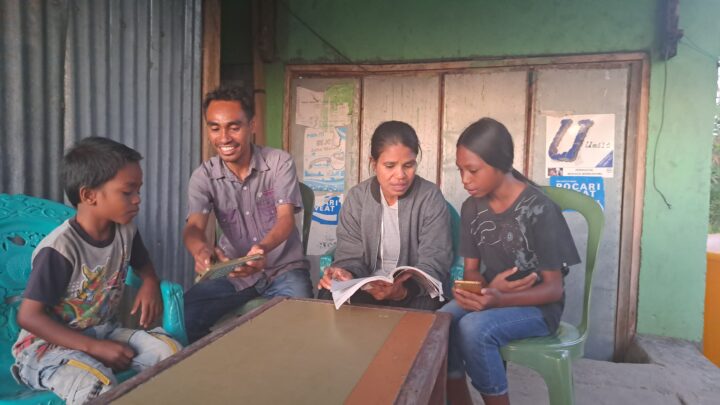July 5, 2023

Covid-19 Triggered A Perfect Storm: Spiking The Prevalence Of Online Child Exploitation And Abuse In Asia
By Gurpreet K Bhatia, ChildFund International
As we approach the halfway point of the 2030 Agenda and re-examine our commitments to SDG16+, we at TAP Network believe that it is more important than ever to elevate and prioritize the voices of civil society. Civil society is calling for genuine commitments from member states to bring bold and accelerated actions towards the upcoming SDG Summit in September. Through the work of storytelling, sharing and learning, we hope to inspire, advocate for and inform those commitments, and emphasize civil society as a critical component in advancing both SDG16+ and all SDGs.
Read the following guest blog and TAP Storytelling piece from ChildFund Alliance, a global network of 11 child-focused development and humanitarian organizations, about their ambitious work on SDG16.2 (“End abuse, exploitation, trafficking and all forms of violence and torture against children”). As a TAP Partner since 2019, the ChildFund Alliance has been a leading collaborator in shaping the TAP Network’s #SDG16Now campaign, providing both expertise on SDG16.2 and lessons learned from their online children’s safety campaign #WebSafeAndWise. In the blog, ChildFund shares the insights of the children and families they work with around the globe and highlights their contributions to the work and approach of the organization.
The Covid-19 pandemic shook us in various ways, resulting in a perfect storm in how we lived, worked, and socialized. It meant staying at home and relying on the Internet for education, entertainment, and socialization for children and young people. What we didn’t realize was that we were exposing our children to the unknown world of the internet, often unprepared and unarmed to deal with the threats to their safety, health, and well-being.
Evidence shows that the incidence of online child sexual exploitation and abuse (OCSEA) spiked worldwide as a result of the pandemic.
In Asia, the Philippines, Indonesia, Vietnam, and Thailand are amongst the highest-risk countries for online safety for children. A research project completed earlier this year involving Interpol and UNICEF covering six Southeast Asian countries found that as many as 20 percent of children had been subjected to some form of online abuse. A recent study by ChildFund Indonesia found that half of Indonesia’s high school and college students bully others online while 60% have themselves been bullied online in the last three months.
These are startling statistics, but what is more concerning is our lack of understanding about children’s internet usage, risk perception, and the generational gap between parents and children. This generational gap discourages parents and children from openly discussing online risks, and often children avoid reaching out to trusted adults in times of need. Asian families must be empowered to combat online abuse through awareness campaigns and educational initiatives.
ChildFund launched an online child safety campaign, #WebSafeAndWise: Creating a Better Digital World with Children, in seven Asian countries this year: Philippines, Indonesia, Vietnam, Cambodia, Timor-Leste, Sri Lanka, and India. The campaign aims to strengthen safeguards for children against online threats including sexual exploitation and abuse and help them learn how to navigate the digital world safely.
Through the campaign, we are bringing forward the voices of children and parents about the risks they face online and their expectations from governments and technology companies. The feedback we get from children works as a road map for how we will plan, develop, and implement campaign activities across geographies.
“I use the internet for educational purposes and day-to-day tasks,” says Prabha, a college student from Sri Lanka. “The challenge I confront is the unwanted information we receive when we use the internet. The greatest risk is our incapacity to manage these unwelcome requests. I am cautious when uploading photos on Facebook since I am aware that they can be edited and exploited. I only accept friend requests from family members and others I know.”
Giang from Vietnam uses the internet for education and entertainment. She feels the biggest risk online is false information. For policymakers and technology companies her message is clear: make digital literacy part of the school curriculum, block websites with harmful content, and ensure age-appropriate content for children.
“When using social media, I am concerned that the photos I upload on Instagram, for example, may be used for malicious purposes,” says Wiwit, an Indonesian high school student. “One of my friends has experienced a similar abuse. A stranger stole her picture and subsequently posted it on Twitter for malicious purposes. When we use Google, we frequently come across advertisements with objectionable content. I appeal to the government to prohibit pornographic advertisements online.
Hansani from Sri Lanka uses the internet extensively for educational and recreational purposes. “The biggest risk on Facebook is that people are not the real versions that they project to be and cheat girls and also share inappropriate videos,” she explains. “I would decline friend requests from unfamiliar people, and if they messaged me on WhatsApp, I would instantly block them.”
Cyndee from the Philippines says the biggest risk online is that your information is accessible to everyone and might be used against you without your knowledge. She makes an appeal to the policymakers to enhance current regulations and guidelines for online safety.
Velya, an Indonesian high school student, spends four to five hours every day on the internet for educational and recreational purposes. She is concerned about her account being hacked and her personal information being misused. She once received an anonymous message containing pornographic material. She urges the government to educate the people about the dangers of the internet, to restrict the spread of misinformation, and to take decisive action against online criminals.
ShiveShalini from Sri Lanka receives WhatsApp messages from unknown people. They attempt to engage her in conversation. But she typically blocks them from WhatsApp. In one case, though, she became friends with a stranger on WhatsApp and met the boy in person. He is still her buddy. When we questioned if she informed her parents about this incident, she answered, “I would never share these things with my mother because I am afraid of her scolding.” If something goes wrong online, I’d rather handle it myself or confide in a friend.”
During our community dialogue with parents about OCSEA, we noted that parents often remain unaware of their children’s online activities. They are concerned about their safety, yet due to their limited exposure to digital technologies, they are unable to keep up. ChildFund Australia’s Swipe Safe – a tailor-made training program aims to skill up young people in the Asia-Pacific to safely navigate their lives online and supports parents and helps professionals to partner with them.
Through our #WebSafeAndWise campaign, we will continue to ensure children and young people are heard and their opinions are taken note of by policymakers and technology companies. Children and young people will play a key role in our advocacy and communication efforts for:
- Governments to strengthen legislation criminalizing online child sexual exploitation and abuse, incorporate OCSAE modules into computer science and sex education curricula in schools;=
- Technology companies to detect and remove OCSEA-related content from their servers; and
- Civil society to focus on awareness generation around OCSEA by launching 360-degree awareness campaigns to educate children, families, and communities about online risks and fill in the data gap.
The above call to action for key stakeholders in safeguarding children from online violence should be viewed through the prism of the UN Convention on the Rights of the Child. The United Nations Sustainable Development Goal 16.2 also seeks to eradicate all forms of violence against children, thereby accelerating the attainment of every child’s right to a life free of fear, neglect, abuse, and exploitation by 2030.
Let’s join forces to make online spaces safer for children. The Time Is Now!
About ChildFund Alliance:
ChildFund Alliance is a global network of 11 child-focused development and humanitarian organizations reaching more than 32 million children and their family members in 70 countries. Our members work to end violence and exploitation against children; provide expertise in emergencies and disasters to ease the harmful impact on children and their communities; and engage children, families and communities to create lasting change. Our commitment, resources, innovation and expertise serve as a powerful force to help children and families around the world transform their lives.
Gurpreet K Bhatia is Senior Advisor, Regional Communication, Asia at ChildFund International
With nearly 12 years of professional experience in the development sector, Gurpreet has worked in a cross-cultural global environment leading strategic marketing and communications. She has led advocacy events, used the power of the media to drive social change, promoted thought leadership, launched regional campaigns and appeals, and guided digital transformation. Gurpreet holds a double master’s in Journalism and Mass Communication and Social Work. She is currently the Senior Advisor, Regional Communications (Asia) for ChildFund International. ChildFund International, founded in 1938, is headquartered in the United States and has operations in 24 countries. It is one of 11 members of the ChildFund Alliance.
About the #SDG16Now Campaign:
In September 2023, Heads of States from across the world will convene for the United Nations Sustainable Development Goals Summit (SDG Summit). Through the #SDG16Now Campaign, civil society, governments, UN agencies, philanthropic groups and the private sector will work together to ensure that the SDG Summit catalyzes action to create more peaceful, just and inclusive societies though Sustainable Development Goal 16 (SDG16+). Join the campaign or endorse targeted actions to support transformative commitments and renewed resourcing for SDG16+ in the lead up to the 2023 SDG Summit.
About TAP Storytelling: In 2021 TAP Network launched the TAP Storytelling Initiative, which aims to closely and frequently highlight the work of the TAP Network membership through working directly with them to produce educational online content about their endeavors addressing SDG16+ and accountability for the 2030 Agenda. Together in this initiative, TAP aims to spotlight the work of our Members and Partners and the challenges, successes, failures, processes and problem solving that comes with it, while also offering the chance for wide promotion through TAP’s outreach channels. We hope that these opportunities will not only offer heightened visibility of the work of our Network, but will also inspire and educate more commitments to SDG16 and transparency and accountability for the 2030 Agenda as a whole. If you are interested in spearheading this work with us, head to our TAP Membership Engagement Portal where you can find the Storytelling Form to submit your interest.
Disclaimer: The views and opinions expressed on the TAP Network Blog Platform are those of the authors and do not necessarily reflect the official policy or position of the TAP Network. Any content provided by our bloggers or authors are of their opinion.
Interested in publishing an article?

